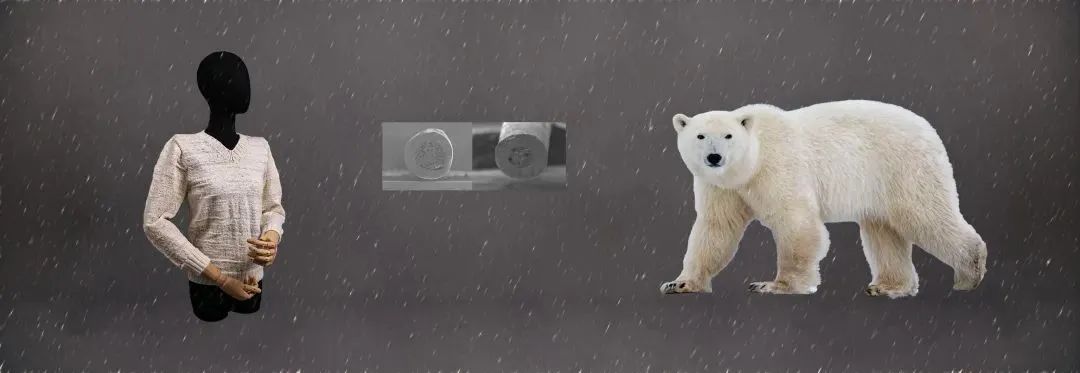
Fabric made from a new type of fiber that mimics polar bear hair. (PHOTO: Zhejiang University)
By QI Liming
If humans had hair like polar bears, they would be able to survive the severe cold without wearing heavy coats. Pondering on this point and being inspired by the structure of polar bear hair, researchers from China's Zhejiang University have created an aerogel fibre that can be woven into clothing.
The polar bear's hair is a hollow structure that encapsulates a large amount of air, which reduces heat loss by inhibiting heat conduction and convection. This principle is the same as the design of warm clothing.
Aerogel, the world's lightest solid material, has long been valued for its thermal insulation properties. By imitating the "core-shell" structure of polar bear hair, a kind of encapsulated aerogel super-warm artificial fiber was invented. The "core" is responsible for super warmth to prevent the loss of heat to some extent. The "shell" is responsible for strength and durability.
In this way, encapsulated aerogel material not only has the thermal insulation function of traditional materials, but can also block the infrared radiation from the human body. In addition, the materials can be directly woven into fabrics with commercial textile machines.
Although the processing cost is high at present, envisaged industrial mass production can drive further process improvements and cost reduction, letting the "polar bear sweater" become a reality on the shelves.
The trio will conduct a series of experiments in fields such as life science, fluid physics, combustion science and materials science. Notably, this is the first time that fruit flies have been taken on a Chinese space mission as experimental subjects. What made scientists choose fruit flies? What experiment will they undergo?
